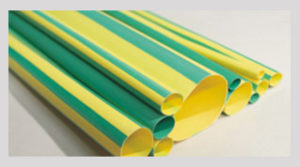
The most crucial aspect in selecting the suitable heat shrink tubing product for your project is to figure out and define the factors essential for successful application. The best way to make sure you are purchasing the most fitting, cost-effective tubing product is to understand where it is going to be used and the requirements it needs to fulfill. Here is a list of things you might like to determine before buying.
Size requirements
Irrespective of where you are going to use the tube – be it in an electronic application, as a shielding cover; as a damage relief or for any different purpose, determining the right size is a very crucial factor.
How to determine the size? A great way to figure that out is by measuring two significant dimensions –
- The minimum diameter the tube has to be in order to cover entirely after shrinking
- The maximum diameter the expanding sleeve is required to slid over warm sliding surface
Note the two dimensions carefully as it is going to help you figure out the shrink ratio and size required for the right heat shrink tubes.
Thickness of the wall
Another crucial dimension to take into consideration is thickness of the tube wall. A specific wall thick is required according to your application. There could be electrical safety standards, pressure endurance factor and many more. If the tube is to be used under extreme environment, greater wall thickness is preferable as compared to the standard tubes available. The manufacturers offer custom sizes and shapes and length as per customers’ demand.
Properties for electrical application
If you are going to use heat shrink tubing for electric insulation or bundle up more than one electrical wire, the tube has to meet specific electrical safety measure guidelines and regulatory standards. You will also need heat shrink end caps that seal cable ends and provide protection. The end caps are available in many sizes to fit in various cable diameters. For electrical applications, the most basic regulations are:
Underwriter Laboratories; European Union; Restriction of Hazardous Substances Directive; Aerospace Material Specification
There are heat shrink boots with adhesive layer forming a coating for watertight and waterproof seal, which protects electrical cables from abrasion or corrosion. It also offers outstanding electrical insulation.
Materials used for Heat Shrink tubes
After you understand the size requirement and standard of tubes required for your application, you have to choose the material of the heat shrink tubing products. The materials used are also on the basis of application. An experienced manufacturer can tell you what material is rightly fitted for your application that yields best results. Often, you will be recommended several products made of different materials that will fit your requirements well. The cost and accessibility of each of these choices also plays a big role for every company. Polyolefin is a material that is most commonly used to manufacture heat shrink tubes, but there are specialty products as well which are made of elastomeric, fluoropolymers and PVC.